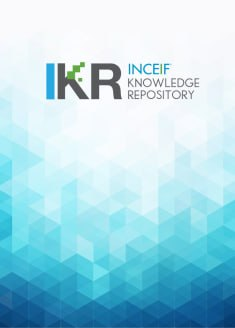
Browse by Author "Nurhafiza Abdul Kader Malim"
Results Per Page
Sort Options
- PublicationEmpirical evidence of risk shifting in bonds and debt-based sukuk: the case of Malaysian corporationsSiti Raihana Hamzah; Abbas Mirakhor; Nurhafiza Abdul Kader Malim; Obiyathulla Ismath Bacha (Emerald Publishing Limited, 2018)
The purpose of this paper is to examine the extent of risk shifting behavior in bonds and sukuk. The examination is significant, as economists and scholars identify risk shifting as the primary cause of the global financial crisis. Yet, the dangers of this debt-financing feature are largely ignored - one needs to only witness the record growth of global debt even after the global financial crisis. To identify the signs of risk shifting existence in the corporations, this paper compares each corporation's operating risk before and after issuing debt. Operating risk or risk of a firm's activities is measured using the volatility of the operating earnings or coefficient variation of earning before interest, tax, depreciation and amortization (EBITDA). Using EBITDA as the variable offers one distinct advantage to using asset volatility as previous research has - EBITDA can be extracted directly from firms' accounting data and is not model-specific.
- PublicationExplaining intermediation costs of Islamic banks in OIC countriesNurhafiza Abdul Kader Malim; Mohamed Eskandar Shah Mohd Rasid; Mansor H. Ibrahim (Edward Elgar Publishing Limited, 2017)
The rapid growth of Islamic finance, especially Islamic banking, and its perceived resiliency during the global financial crisis have been key features in recent Islamic finance literature. The Islamic banking business model has also started to attract empirical attention from economists as to whether it can instil the much needed stability into the financial system. While some studies have offered evidence that Islamic banks are relatively more stable and resilient than their conventional counterparts (Cihak and Hesse, 2010; Hasan and Dridi, 2010), there still remain several concerns over whether Islamic banks can play a distinct role in the stability of the financial system and can better allocate financial resources ...
- PublicationFinancial intermediation costs in Islamic banks: the role of bank-specific, market-specific and institutional-governance factorsNurhafiza Abdul Kader Malim; Mansor H. Ibrahim; Mohamed Eskandar Shah Mohd Rasid (INCEIF, 2015)
This study empirically investigates the financial intermediation costs represented by net financing margins in the Islamic banking sector in OIC countries for 2005-2011 period utilizing Generalized Method of Moments (GMM). We focus on the role of bank-specific, macroeconomic, market-specific and institutional-governance factors on the Islamic banks' margins. For comparative analysis, we assess the difference in margins and analyse whether the factors that affect margins in conventional banks affect Islamic bank differently by constructing an unmatched and matched sample. Further, we examine the impact of the global financial crisis on both banks. The findings indicate that risk aversion, bank size, credit risk, inflation and GDP growth are important factors in explaining Islamic banks' margins. While, overhead costs, market concentration and institutional-governance factors have no significant impact on the margins of Islamic banks. We also find evidence that Islamic banks have higher margins that conventional banks in the case of the matched sample. The results also suggest that all the factors above have no differential impact on the margins of Islamic banks except for bank size in both samples. Interestingly, the crisis has a positive impact on Islam banks' margins but a negative impact on those of conventional banks. Our findings demonstrate important policy implications for reducing the financial intermediation costs of Islamic banks which include sound risk management, scale efficiency, macroeconomic stability, products innovation and managerial efficiency.
- PublicationFundamentals of international economicsBashir Ahmad Shabir Ahmad; Muzafar Shah Habibullah; Nurhafiza Abdul Kader Malim; Baharom Abdul Hamid (PBS Press, 2025)
This book is structured to guide the students through the core areas of international economics. We begin with the fundamental theories of international trade, exploring why nations trade and how they benefit, moving from classical insights to modern explanations that account for intra-industry trade and dynamic technological shifts. We then delve into the realm of trade policy, examining the various tools governments use to influence trade flows and their economic consequences. The second half of the book shifts focus to international finance, unravelling the complexities of foreign exchange markets, balance of payments, international capital movements, and the macroeconomic policies used to manage external balances. Throughout these discussions, the Malaysian experience will serve as a recurring thread, illustrating how theoretical models play out in a dynamic, developing economy.
Abstract View
2677381
View & Download
199369
